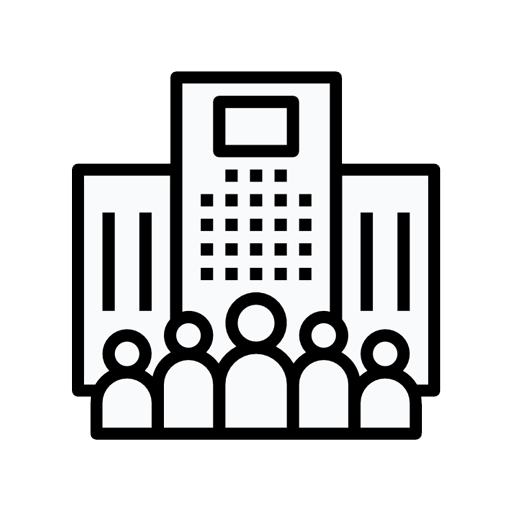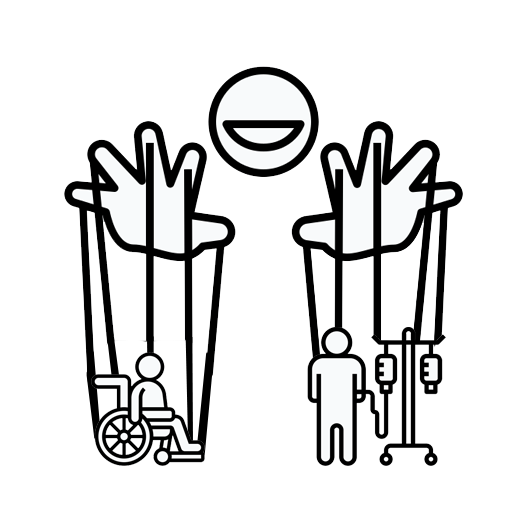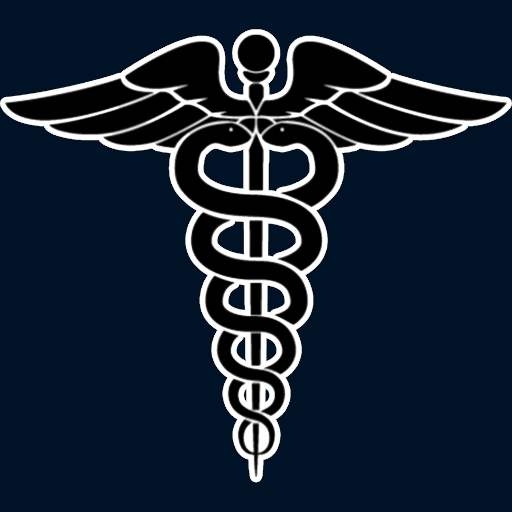Why Is Healthcare So Expensive?
The Causes
Bureaucracy
Government bureaucracy drives up much of the prices in healthcare by adding layers and layers of unnecessary rules and "hoops" that must gone through. This can be things doctors have to do, patients have to do, insurance companies, or any provider for that matter. who who must comply with some

Regulatory Agencies
Government regulation becomes so pervasive that the pursuit of profit, driven by consumer preferences and demands, becomes mostly replaced by the whims of regulatory bureaucrats. This is then exerted through its regulatory agencies which, will often times "interpret" policy how they see fit.

Monopolies
The research clearly shows that growing monopolization has raised prices for patients. Less competition means healthcare providers can charge whatever they want.
“If we look around, then, at the crucial problem areas of our society – the areas of crisis and failure – we find in each and every case a “red thread” marking and uniting them all: the thread of government. In every one of these cases, government either has totally run or heavily influenced the activity. “
– Murray Rothbard
Articles
![Medical Error—The Third Leading Cause of Death in the US [AUDIO] Medical Error—The Third Leading Cause of Death in the US [AUDIO]](https://whyishealthcaresoexpensive.com/wp-content/uploads/2023/12/Medical-Failure.jpg)
Medical Error—The Third Leading Cause of Death in the US [AUDIO]
![A NEW PERSPECTIVE ON HEALTH CARE: THE CASE FOR PREVENTION OVER PRESCRIPTION [VIDEO] A NEW PERSPECTIVE ON HEALTH CARE: THE CASE FOR PREVENTION OVER PRESCRIPTION [VIDEO]](https://whyishealthcaresoexpensive.com/wp-content/uploads/2023/09/Healthcare.webp)
A NEW PERSPECTIVE ON HEALTH CARE: THE CASE FOR PREVENTION OVER PRESCRIPTION [VIDEO]
![Shocking Truth About Big Pharma and Exorbitant Drug Prices [VIDEO] Shocking Truth About Big Pharma and Exorbitant Drug Prices [VIDEO]](https://i.ytimg.com/vi/Jua9hpNdafA/maxresdefault.jpg)
Shocking Truth About Big Pharma and Exorbitant Drug Prices [VIDEO]
![Woke Medicine – Explaining The U.S. Doctor Shortage [VIDEO] Woke Medicine – Explaining The U.S. Doctor Shortage [VIDEO]](https://i.ytimg.com/vi/4co0kcocgqs/maxresdefault.jpg)
Woke Medicine – Explaining The U.S. Doctor Shortage [VIDEO]

Why is Medical Care so Expensive?

The Myth of the American Free-Market In Healthcare

History Of Health Care In America
(Timeline Is A Work In Progress)
Pre-Health Insurance
Health insurance was hardly used. The treatments available to patients were at times limited or even nonexistent, so the market for insurance was largely undeveloped. Some people did acquire sickness insurance, but that was an income maintenance program during times of illness, not a program aimed at providing for one's medical costs.
(Source: Woods, Tom. Rollback: Repealing Big Government Before the Coming Fiscal Collapse. Regnery Publishing, 2011)
Physician oligopoly started after the American Medical Association lobbied the states to strengthen the regulation of medical licensure and allow their state AMA offices to oversee the closure or merger of nearly half of medical schools and also the reduction of class sizes. The states have been subsidizing the education of the number of doctors recommended by the AMA.
(Source : Mike Holly, "How Government Regulations Made Healthcare So Expensive" 05/09/2017)
Prescription drug monopolies begin after the federal government started allowing the patenting of drugs. (Drug monopolies have also been promoted by government research and development subsidies targeted to favored pharmaceutical companies.)
(Source : Mike Holly, "How Government Regulations Made Healthcare So Expensive" 05/09/2017)
Programs comparable to modern health insurance policies gained some steam during the 1930s, but really began to pick up in the next two decades, when government policies made them artificially attractive.
(Source: Woods, Tom. Rollback: Repealing Big Government Before the Coming Fiscal Collapse. Regnery Publishing, 2011)
United States Enters World War II
Businesses on the home front find it difficult to attract the labor they need because the draft has taken 11 million Americans out of the workforce, and the federal government has imposed wage and price controls. These controls make it illegal for businesses to attract additional labor by offering higher wages. Businesses find a way around this restriction in the form of employer-supplied medical insurance. The wage control authorities do not consider this benefit to be a wage increase, and thus not subject to taxation like regular wages. This is the origin of what becomes the tax exemption for employer-provided medical care.
(Source: Woods, Tom. Rollback: Repealing Big Government Before the Coming Fiscal Collapse. Regnery Publishing, 2011)
Buyer monopolization begins after the McCarran-Ferguson Act led by the Roosevelt Administration exempts the business of medical insurance from most federal regulation, including antitrust laws. (States have also more recently contributed to the monopolization by requiring health care plans to meet standards for coverage.)
(Source : Mike Holly, "How Government Regulations Made Healthcare So Expensive" 05/09/2017)
Post World War II to 1959
Labor unions begin to make employer-financed medical insurance part of their contract demands. Nonunion employers also feel compelled to provide it, in the hope that they can avoid the unionization of their workplaces.
(Establishment of health care as a company-offered benefit seems innocuous but as a result, medical care gradually becomes an expense Americans pay for only minimally out of pocket. People became accustomed to having most costs covered by a third party, slowly but surely coming to disregard price altogether when evaluating medical products and services. At the same time suppliers of health care have incentive to offer high-cost treatments with marginal benefits because someone else is picking up the bill.
Role of non-market forces bringing about the present reliance on employer-supplied medical insurance; i.e. the special legal privileges labor unions enjoy, and the lengths to which employers are willing to go in trying to preserve a free labor market in their corner of the economy, derive from statutory interventions into the free market and are not part of the market itself.)
(Source: Woods, Tom. Rollback: Repealing Big Government Before the Coming Fiscal Collapse. Regnery Publishing, 2011)
Institutional provider monopolization begins after favored hospitals receive federal subsidies (matching grants and loans) provided under the Hospital Survey and Construction Act. (States have also been exempting non-profit hospitals from antitrust laws.)
(Source : Mike Holly, "How Government Regulations Made Healthcare So Expensive" 05/09/2017)
Employers start to become the dominant third-party insurance buyer during the Truman Administration after the Internal Revenue Service declares group premiums tax-deductible.
(Source : Mike Holly, "How Government Regulations Made Healthcare So Expensive" 05/09/2017)
At this point, government covers 21 percent of total medical expenditures, with consumers bearing 55 percent.
(Source: Woods, Tom. Rollback: Repealing Big Government Before the Coming Fiscal Collapse. Regnery Publishing, 2011)
Medicare/Medicaid Created
Governmental third-pary payer Medicare and Medicaid were created. Medicaid, means-tested program for the poor. Medicare, program to provide for the medical needs of American seniors regardless of income. (artificially stimulated demand for medical services on the part of consumers who were not themselves bearing the cost)
(Source: Woods, Tom. Rollback: Repealing Big Government Before the Coming Fiscal Collapse. Regnery Publishing, 2011)
- “MEDICARE” put into law, Mills bill passes, “Three layer cake”
- Title XVIII, Part A – Hospital Insurance: Provided all persons over 65 eligilbe for limited stay at hospital, based on King-Anderson
- Title XVIII, Part B – Supplementary Medical Insurance: Voluntary, for physicians’ and home health services,
- Title XIX, Medicaid – gives states options of how to care for medically needy, expansion of Kerr-Mills bill
(Source: Jason Shafrin, "The Genesis and Development of Medicare”, 2006)
Price Inflation
Physician charges rose 39% after Medicare compared with 15% in the 5 years before Medicare
(Source: Jason Shafrin, "The Genesis and Development of Medicare”, 2006)
Totally disabled included as eligible for Medicare benefits
(Source: Jason Shafrin, "The Genesis and Development of Medicare”, 2006)
Certificate of Need (CON) Program Adopted
A certificate of need (CON) is a government permission slip that is required to enter certain industries.
Hospitals and existing healthcare providers LOVE CON programs because it gives them a competitive advantage by allowing them to block competitors from ever offering new services. That’s why they fight to keep CON laws on the books. Unfortunately, patients are the ones who suffer most.
(Source: Institute for Justice, “Conning the Competition: A Nationwide Survey of Certificate of Need Laws” August 2020
Buyer monopolization strengthened during the Nixon Administration after Employee Retirement Income Security Act exempted employee health benefit plans offered by large employers (e.g., HMOs) from state regulations and lawsuits.
(Source : Mike Holly, "How Government Regulations Made Healthcare So Expensive" 05/09/2017)
Omnibus Budget Reconciliation Act
Limits placed on inpatient, outpatient reimbursements.
(Source: Jason Shafrin, "The Genesis and Development of Medicare”, 2006)
Tax Equity and Fiscal Responsibility Act (TEFRA)
Changes hospital reimbursement from cost+% (hospitals were reimbursed based on actual expenditures) to DRG (diagnosis-related group, hospitals receive a fixed payment for each patient that is determined by the patient's diagnosis) Resulted in creating incentives for hospitals to increase the volume of admissions in profitable diagnoses relative to unprofitable diagnoses; encouraging certain types of admissions and discouraging others resulting in potentially dangerous situations for those with the "wrong" diagnosis. Also resulted in more instances of upcoding. (Source: Leemore S. Dafny, "HOW DO HOSPITALS RESPOND TO PRICE CHANGES?", 2003)
Prescription drug monopolies strengthened during the Reagan Administration after Drug Price Competition and Patent Term Restoration Act permitted the extension of patents beyond 20 years. (The government has also allowed pharmaceuticals companies to bribe physicians to prescribe more expensive drugs.)
(Source : Mike Holly, "How Government Regulations Made Healthcare So Expensive" 05/09/2017)
Hoover Institute Study, "Input and Output in Health Care," reports that 56 percent of all hospitals in America were privately owned and for-profit in 1910. After 60 years of subsidies for government-run hospitals, number had fallen to about 10 percent. By the early 1990s government had taken over almost the entire hospital industry. That small portion of the industry that remains for-profit is regulated in an extraordinarily heavy way by federal, state and local governments so that many (perhaps most) of the decisions made by hospital administrators have to do with regulatory compliance as opposed to patient/customer service in pursuit of profit.
(Source: Thomas J. DiLorenzo, "Socialized Healthcare vs. The Laws of Economics" 07/28/2009"
At this point, government covers 43 percent of all medical expenditures with consumers only bearing 17 percent.
(Source: Woods, Tom. Rollback: Repealing Big Government Before the Coming Fiscal Collapse. Regnery Publishing, 2011)
Prescription drug monopolies strengthened during Bush Administration after Medicare Prescription Drug, Improvement, and Modernization Act provided subsidies to the elderly for drugs.
(Source : Mike Holly, "How Government Regulations Made Healthcare So Expensive" 05/09/2017)
Nationalization strengthened after the Patient Protection and Affordable Care Act of 2010 (“Obamacare”) provided mandates, subsidies and insurance exchanges, and the expansion of Medicaid.
(Source : Mike Holly, "How Government Regulations Made Healthcare So Expensive" 05/09/2017)
